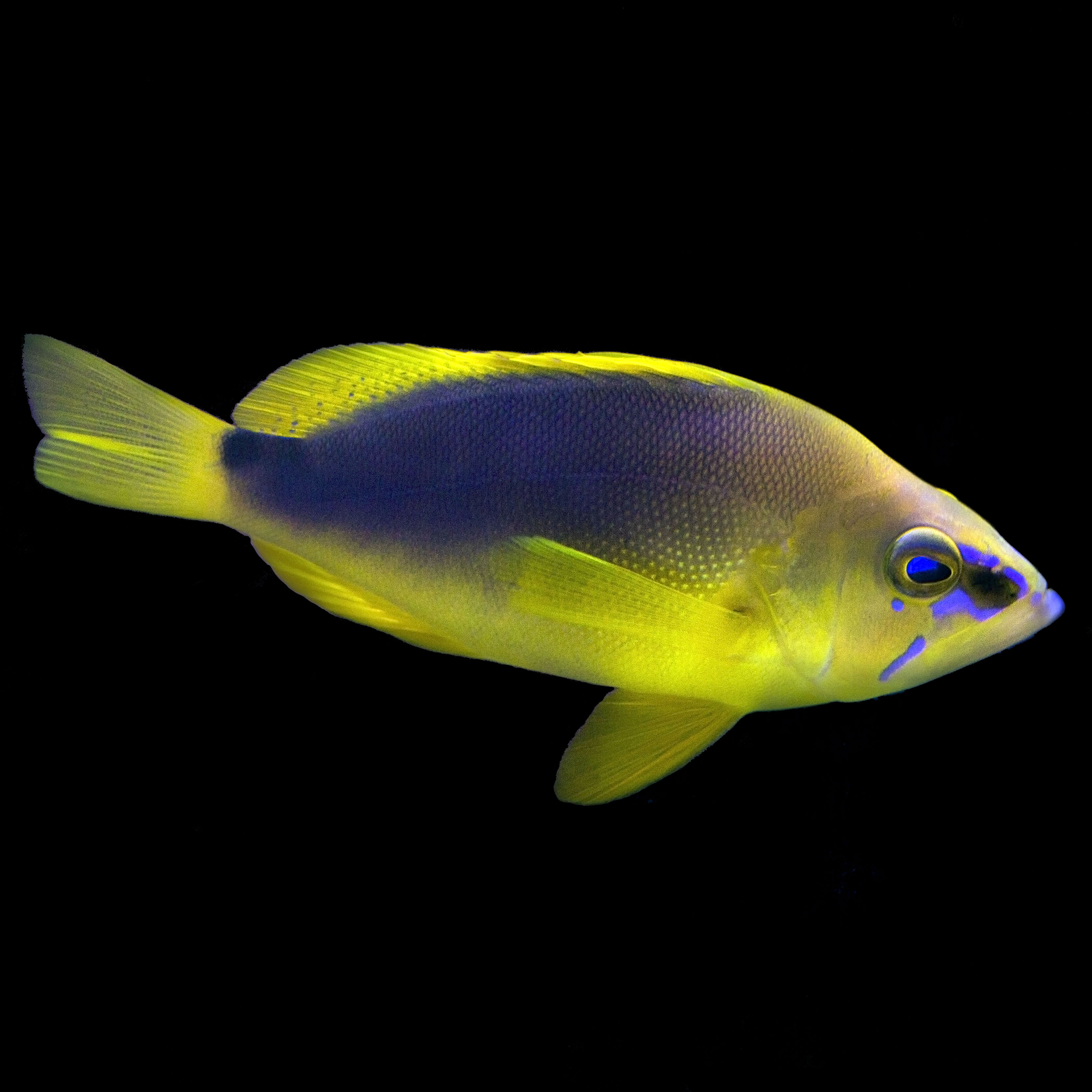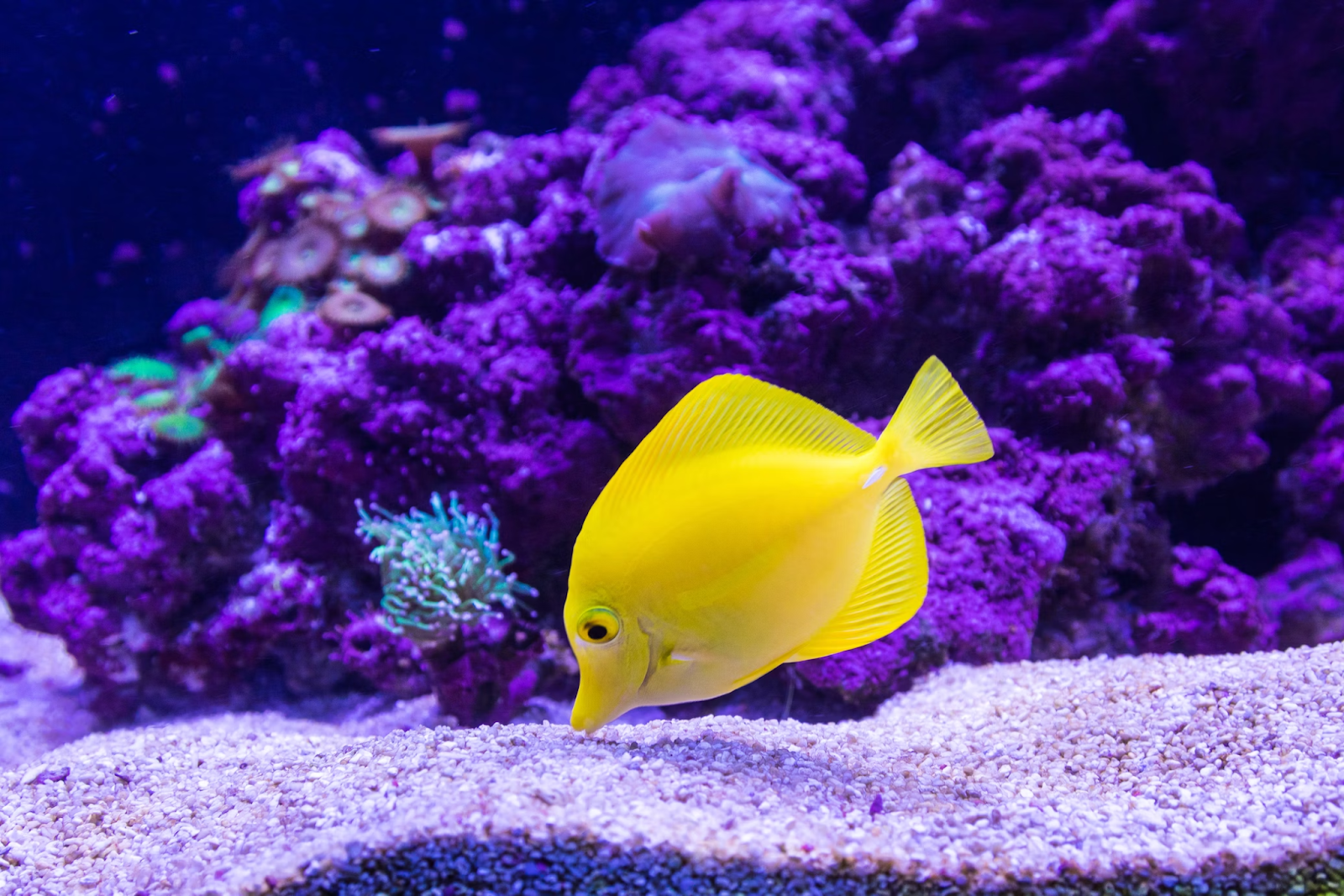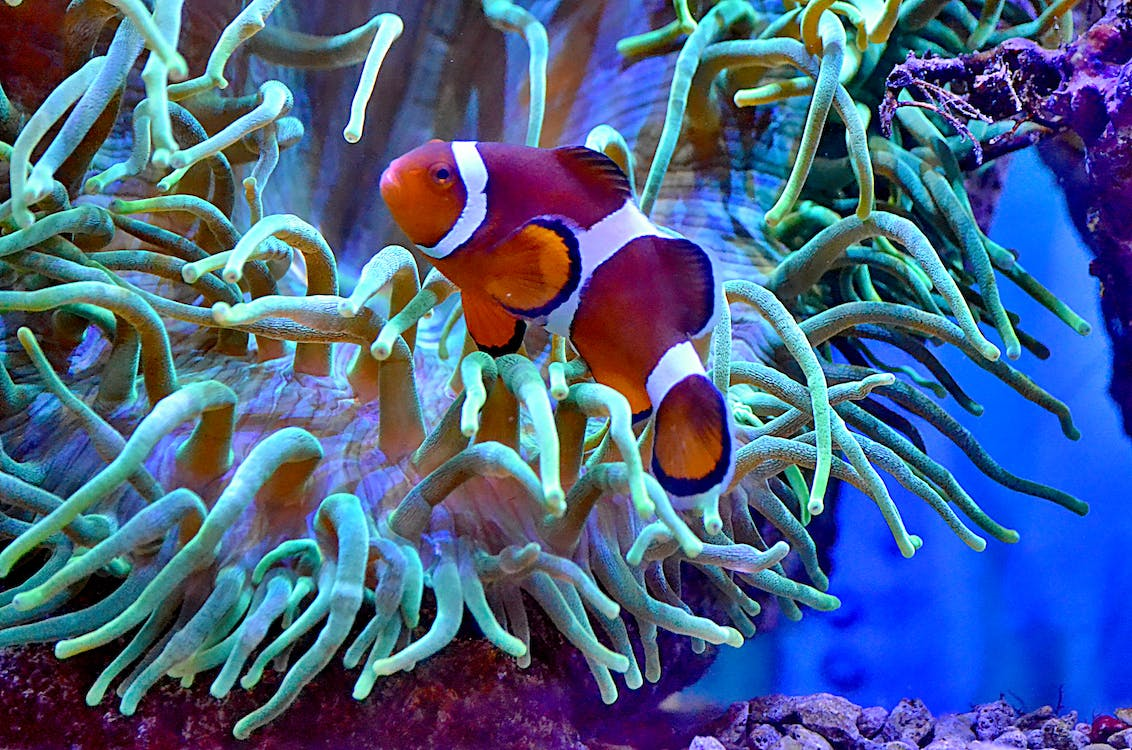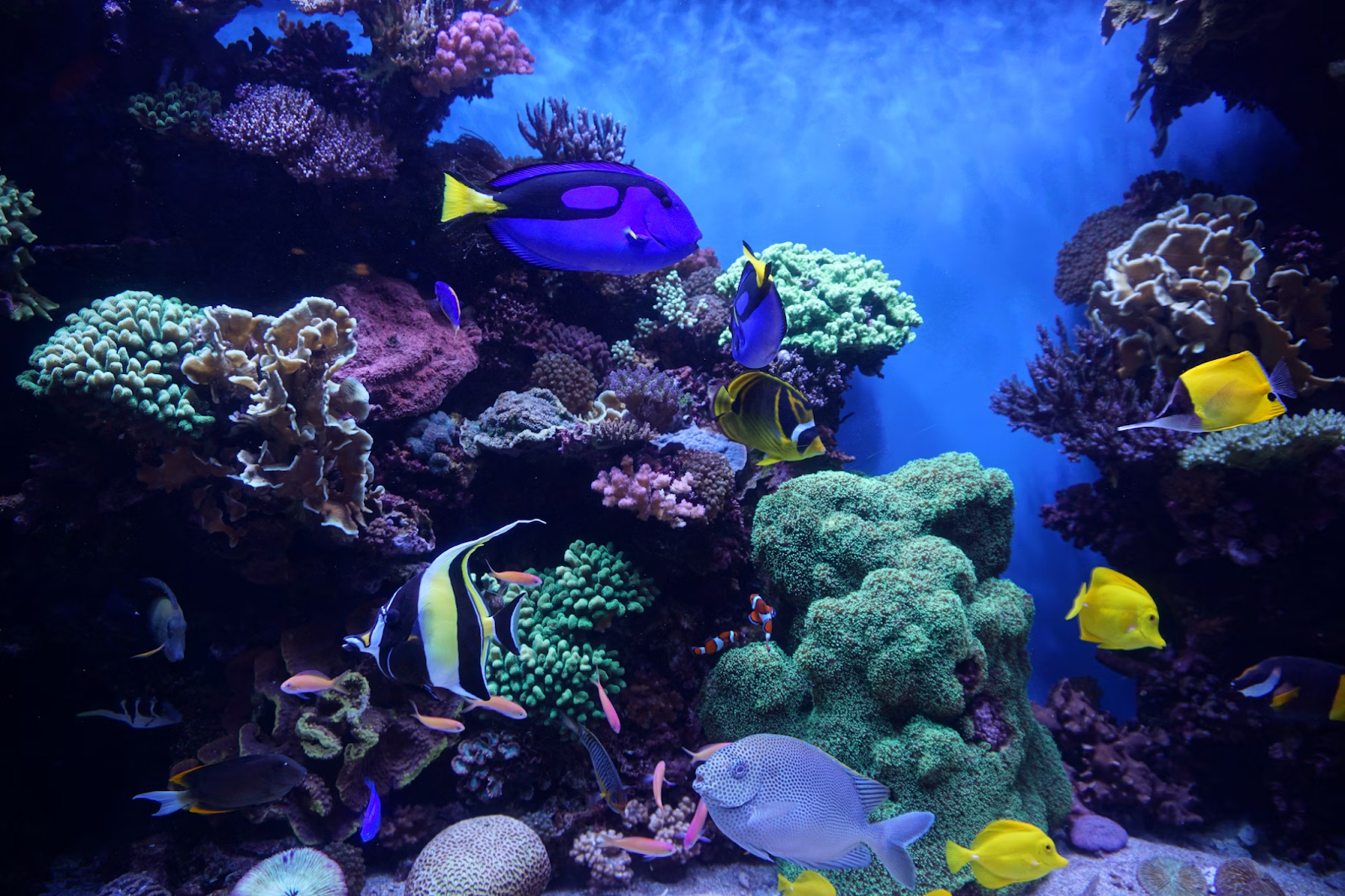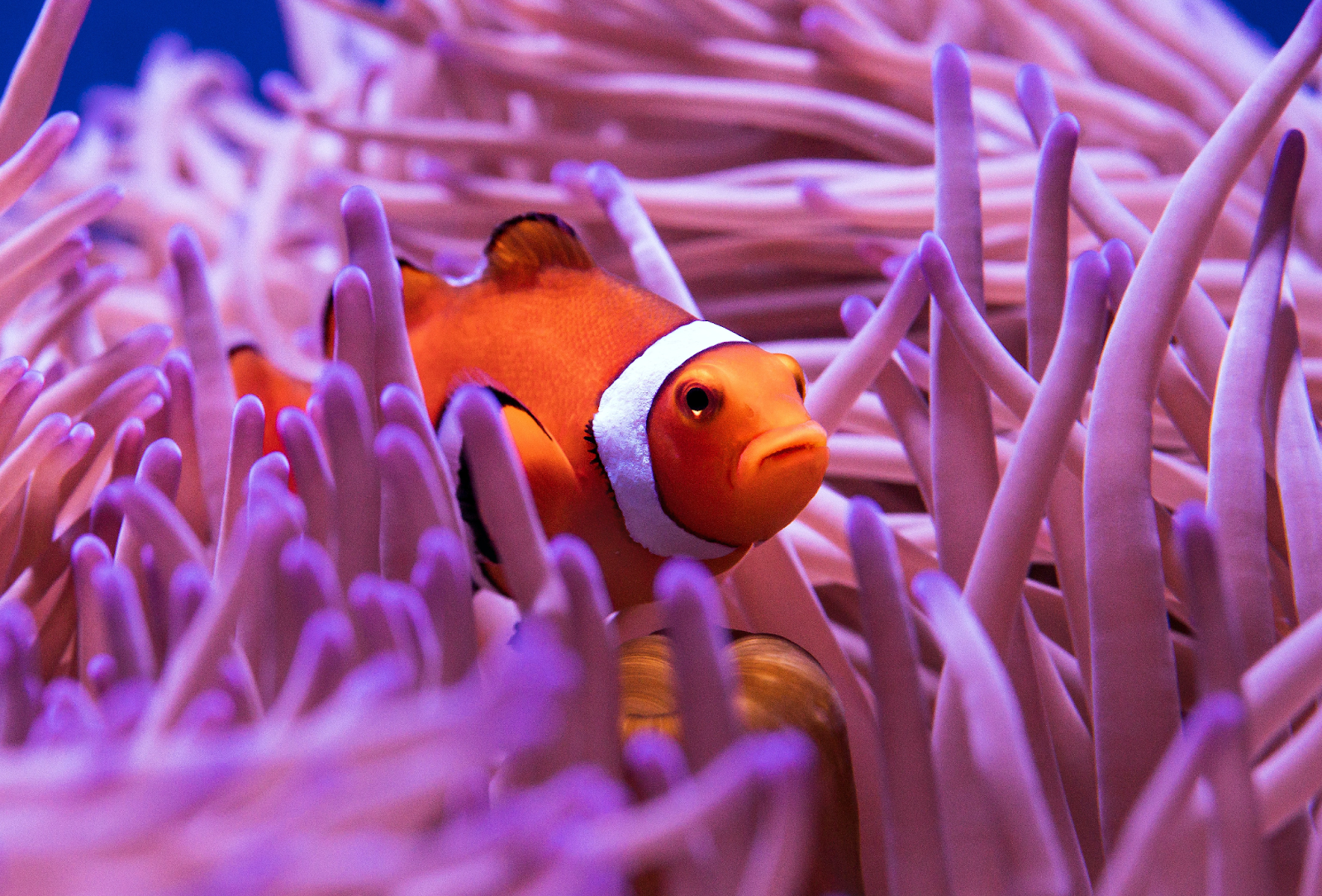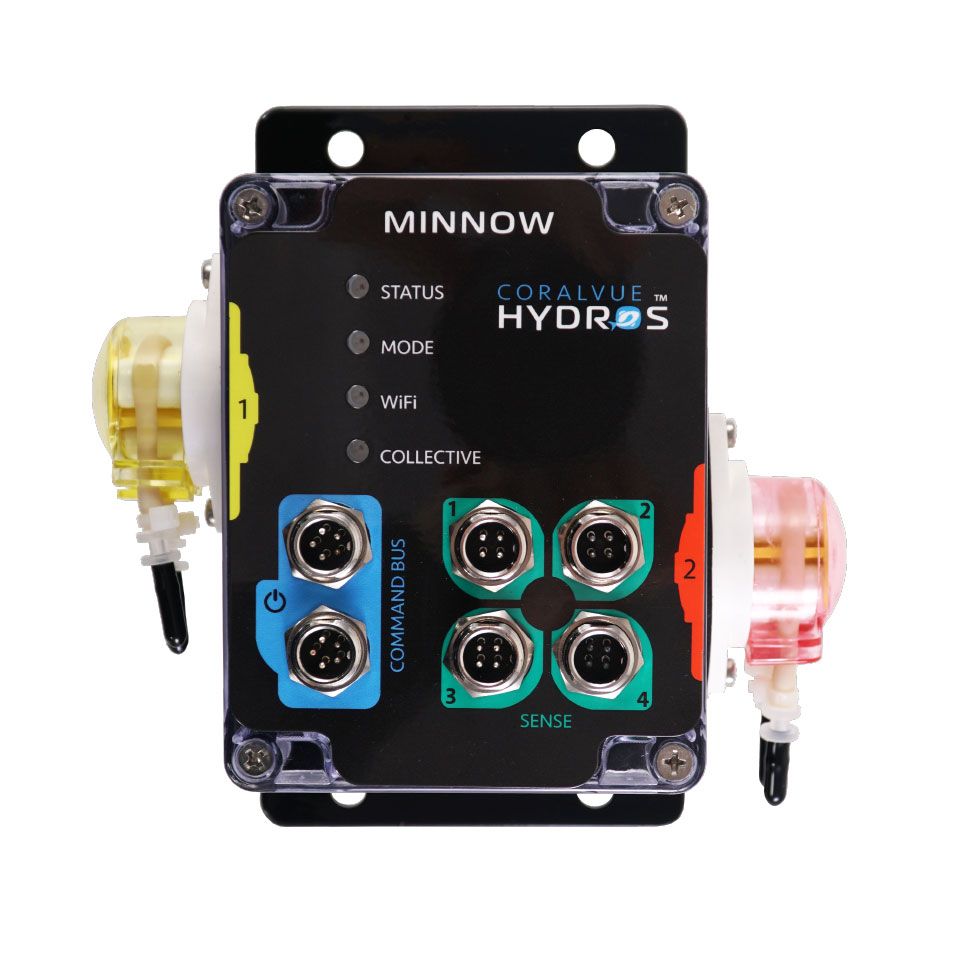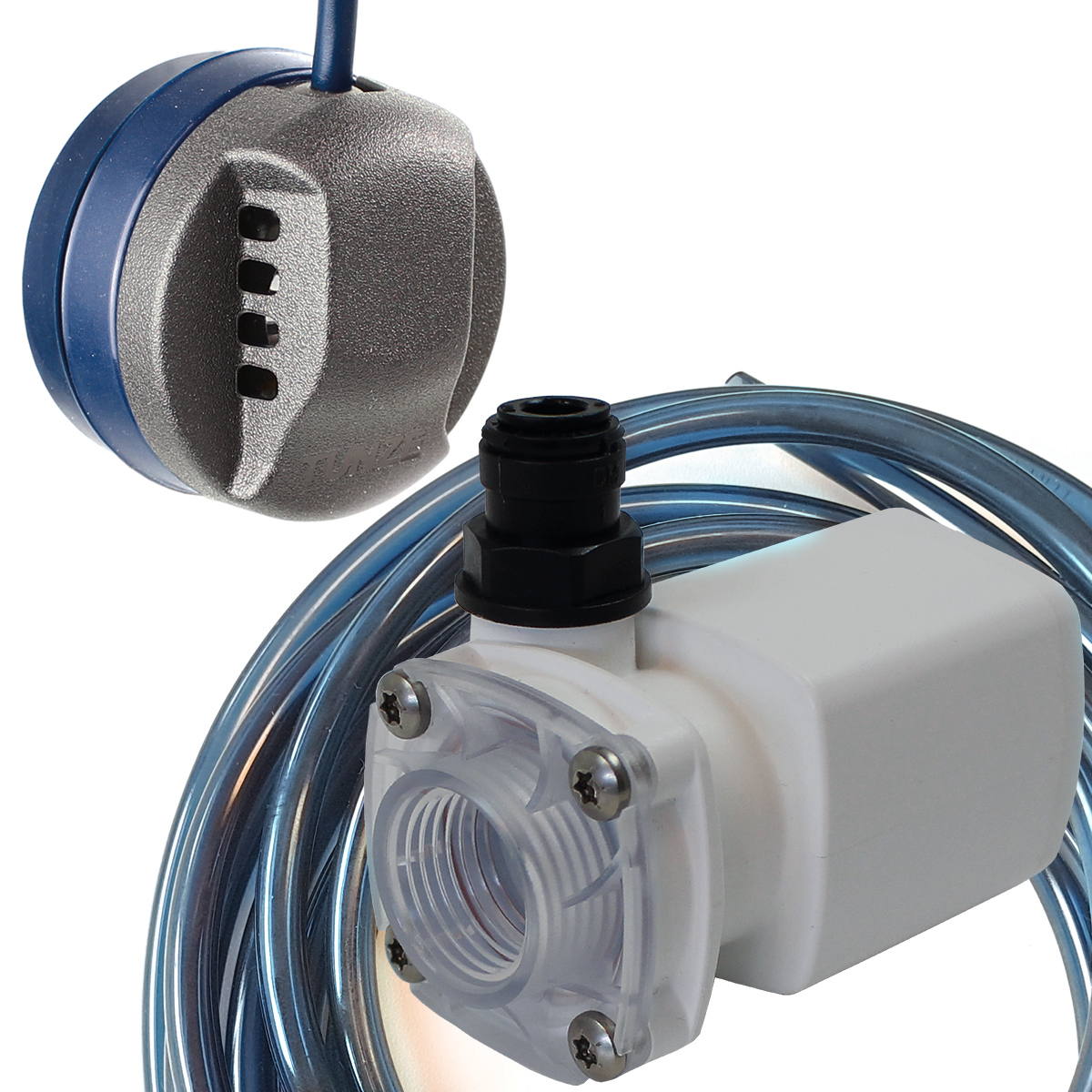In the vast world of aquarium fish, there are some lesser-known gems that deserve recognition despite their reserved nature. One such species is the Shy Hamlet (Hypoplectrus guttavarius), a fascinating fish boasts a vibrant electric blue streak near its eye. or flashy behaviors but holds its own unique charm. Let's take a look into what makes the Shy Hamlet stand out in the aquarium trade.
Latin Name: Hypoplectrus guttavarius
Collection and Distribution: Shy Hamlets are primarily collected from the warm waters of the Caribbean Sea, particularly around reefs and rocky outcrops. They tend to inhabit depths ranging from 20 to 60 feet, preferring areas with ample hiding spots where they can retreat when feeling threatened by other marinelife.
Average Lifespan: In captivity, Shy Hamlets can live anywhere from 5 to 10 years with proper care and conditions, making them a long-term commitment for hobbyists.
Aquarium Difficulty: While not overly challenging to care for, Shy Hamlets require a well-established marine aquarium with stable water parameters. They appreciate ample hiding spots provided by live rock formations or artificial caves to mimic their natural habitat. Regular water changes and a balanced diet are crucial for their health and longevity.
Fish Compatibility: Shy Hamlets are generally peaceful fish but may exhibit territorial behavior towards their own kind or similar-looking species. They can coexist with a variety of tank mates, including other peaceful reef fish like clownfish, gobies, and blennies. However, caution should be exercised when introducing them to more aggressive or larger species that may intimidate them.
Invetebrate Compatibility: Shy Hamlets, like many other predatory fish, have the potential to consume smaller aquarium shrimp if given the opportunity. While they primarily feed on small crustaceans, plankton, and tiny fish in the wild, they may view smaller shrimp species commonly kept in aquariums, such as dwarf shrimp or cleaner shrimp, as suitable prey.
It's essential to consider the size of the shrimp in relation to the Shy Hamlets and their predatory instincts. Larger shrimp species, such as peppermint shrimp or larger cleaner shrimp species, may be less vulnerable to predation by Shy Hamlets due to their size and defensive mechanisms.
However, smaller shrimp species, particularly juvenile or dwarf shrimp, are more likely to be targeted by Shy Hamlets. If keeping shrimp in the same aquarium as Shy Hamlets, it's crucial to provide ample hiding spots and refuge areas where the shrimp can seek shelter if threatened.
Additionally, closely monitoring the interactions between the Shy Hamlets and the aquarium shrimp is essential. If there are signs of aggression or predation towards the shrimp, it may be necessary to rehome the shrimp to a separate tank to ensure their safety.
Ultimately, while Shy Hamlets may not actively hunt aquarium shrimp as their primary food source, they may still pose a risk to smaller shrimp species in the tank. Aquarists should carefully assess the compatibility between Shy Hamlets and aquarium shrimp and take appropriate precautions to minimize potential conflicts.
Diet: In the wild, Shy Hamlets primarily feed on small crustaceans, plankton, and tiny fish. In captivity, they readily accept a varied diet consisting of high-quality frozen and live foods such as brine shrimp, mysis shrimp, and chopped seafood. Supplementing their diet with algae-based flakes or pellets can also provide essential nutrients.
Maximum Size: Shy Hamlets typically reach a maximum size of around 4 to 5 inches, making them suitable for medium to larger sized aquariums.
Reef Safe: Shy Hamlets are generally considered reef safe, meaning they can coexist with coral and other reef inhabitants without causing harm. These fish typically do not exhibit behaviors that would damage or disturb coral reefs, making them suitable candidates for reef aquariums.
Despite their reserved demeanor, Shy Hamlets add a sense of character to any marine aquarium with their graceful movements and understated beauty. However, it's worth noting that they are not as commonly available in the aquarium trade compared to their more popular counterparts like the Indigo Hamlet (Hypoplectrus indigo). While the Golden Hamlet (Hypoplectrus gummigutta) is even a more rare find.
The Indigo Hamlet, with its striking blue and black coloration, is a sought-after species among enthusiasts. It boasts a confident demeanor and can often be found swimming prominently in the open water, making it a captivating centerpiece for reef aquariums.
On the other hand, the Golden Hamlet, adorned in vibrant shades of yellow and gold, is prized for its eye-catching appearance. Though not as outgoing as the Indigo Hamlet, it adds a touch of brilliance to aquariums and can thrive in similar conditions.
While the Shy Hamlet may not steal the spotlight in your aquarium, it is more of a rare find in the aquarium trade and valuable addition to any marine aquarium enthusiast looking for harder to find species of fish. With proper care and attention, these fish can bring lots of enjoyment to your aquarium.




